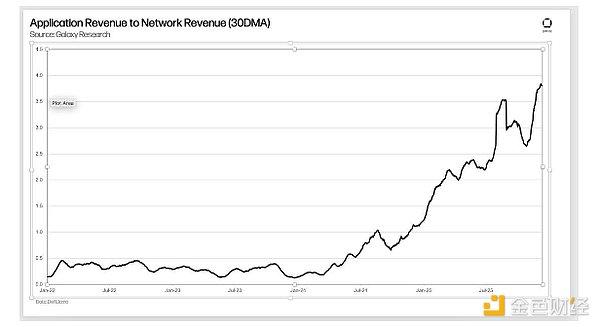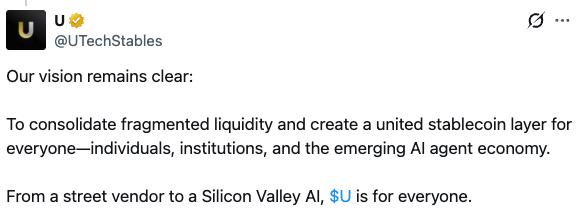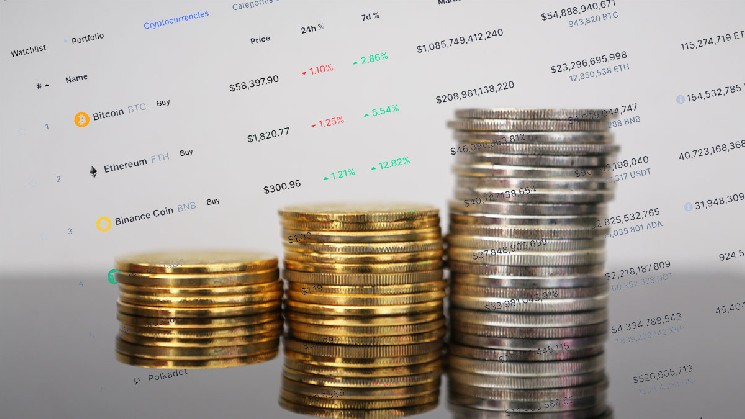Author: IOSG Ventures
Foreword
With the progress in data, computing power, and algorithm research in recent years, AI development has seen tremendous breakthroughs, especially with the emergence of OpenAI's GPT-4, which represents the arrival of large language models (LLMs) that have driven productivity improvements and social efficiency transformations.
However, the drawbacks of these centralized large models represented by GPT-4 have also become apparent, such as the limitations of third-party integrations, which have impacted the extensibility and interoperability of AI agents based on centralized models.
Therefore, open-source large models like the Llama series have gained increasing popularity among researchers, but open-source does not necessarily mean transparency, and it also faces many challenges.
The main dilemma is that for most contributors, open-source AI development provides no economic incentives, and even though there are some competition rewards, they are usually one-time, and subsequent improvement and development work still requires volunteering, unless the project reaches a certain scale and has a large community of followers, which may then create more revenue opportunities and attract more contributors to continue improving.
Therefore, the Bittensor AI project is trying to use web3 token mining to make open-source AI development more sustainable, verifiable, and efficient. Through the Yuma Consensus, it introduces and aligns resources with researchers (Miners), validators (Validators), and AI project teams (Subnet Creators), making the entire AI research more transparent and decentralized, allowing anyone to participate in AI contributions and earn their due rewards.
The performance of the secondary market tokens also reflects people's expectations, with the price rising from around $50 in September 2023 to over $500 in December 2024, a 10-fold increase!
Recently, Bittensor's investor and Digital Currency Group founder has established a dedicated accelerator called Yuma to incubate subnet projects within the Bittensor ecosystem, demonstrating his confidence and potential in the Bittensor project.
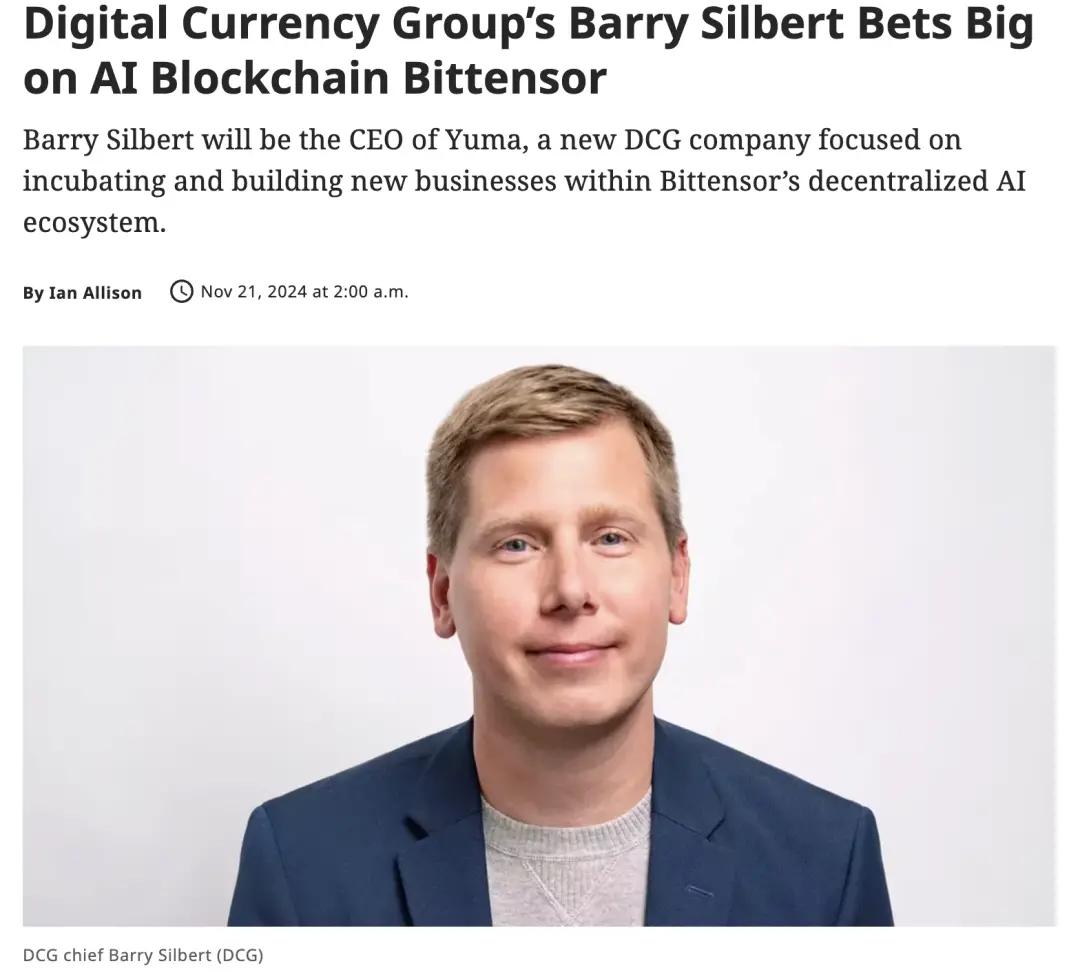
Source: Coindesk
What is Bittensor?
Bittensor was founded in 2021 by a team from Toronto, Canada, including Jacob Robert Steeves, Ala Shaabana, and Garrett Oetken.
Bittensor is a decentralized AI infrastructure used by AI developers to build and deploy machine learning models or other AI-related developments. Many Web3 AI projects, whether or not they have their own blockchain, can connect to Bittensor's "Subtensor" blockchain and become a subnet.
What is a Subnet?
Subnets are the core of the Bittensor ecosystem, and each subnet in Bittensor is an independent, incentive-based competitive market. Anyone can create a subnet, define the tasks to be executed in that subnet, and design the incentive mechanism (in the machine learning analogy, the incentive mechanism can be understood as the target loss function, which can guide the model training towards the desired result). All that is required is to pay a registration fee (denominated in TAO) to obtain a subnet's netuid. Note that the subnet creator does not need to perform the operational tasks within the subnet, but rather transfers the rights to operate the subnet tasks to others.
There are two ways to participate in operating a subnet: as a subnet miner or a subnet validator. In addition to paying the registration fee (in TAO, and also staking TAO if becoming a validator), the participant only needs to provide a computer with sufficient computing resources and register it, along with their wallet, to a subnet, and then run the subnet miner module or subnet validator module (both are Python code from the Bittensor API) on that computer.
How does the Subnet Competitive Market Work?
The operation of the subnet competition is as follows: Suppose you decide to become a subnet miner. The subnet validators will assign you some tasks to complete. Other miners in the subnet will also receive the same type of tasks. After all subnet miners have completed the tasks, they will submit the results to the subnet validators.
The subnet validators will then evaluate and rank the quality of the tasks submitted by the subnet miners. As a subnet miner, you will receive rewards (denominated in TAO) based on the quality of your work. Similarly, other subnet miners will also receive rewards based on their performance. Meanwhile, the subnet validators will also be rewarded for ensuring high-quality subnet miners, driving the continuous improvement of the overall subnet quality. All of these competitive processes are automated based on the incentive mechanism coded by the subnet creator.
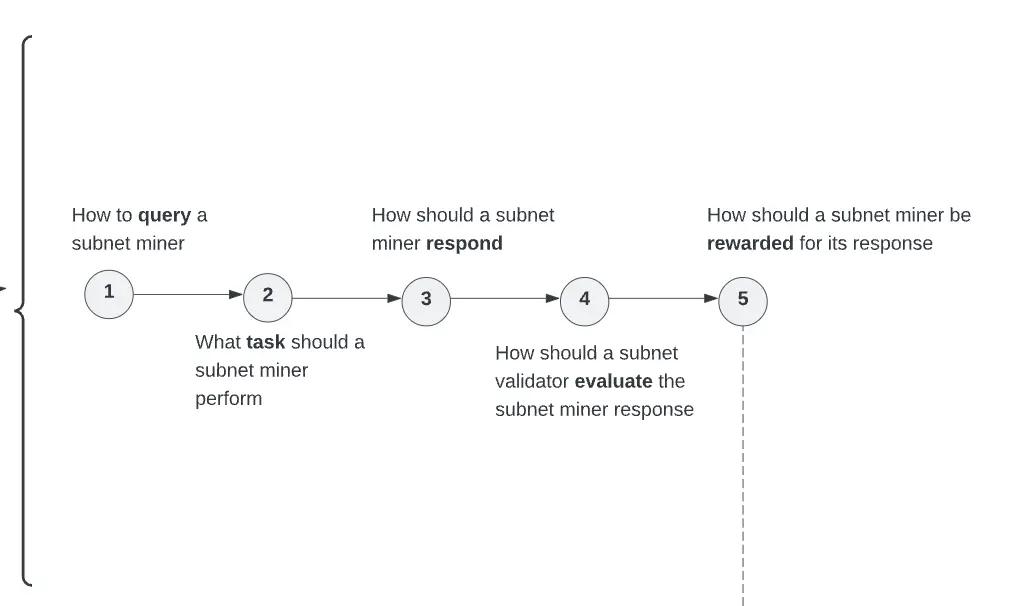
Source: Steps on how Subnet Creator defines Incentive Mechanism
The incentive mechanism is ultimately a judgment of the performance of the subnet miners. When the incentive mechanism is well-calibrated, it can form a virtuous cycle, with subnet miners continuously improving the required tasks through competition.
Conversely, poorly designed incentive mechanisms may lead to loopholes and shortcuts, adversely affecting the overall quality of the subnet and dampening the enthusiasm of fair miners.
The specific work of each subnet miner depends on the purpose for which the subnet was established by the subnet creator, which can be quite varied or quite specific. For example, the task of miners in Subnet 1 may be to respond to prompts sent by the subnet validators and provide the best completion results, or the task of miners in Subnet 47 may be to provide storage.
Each subnet also has its own unique research and commercialization direction, such as attempting to overcome technical challenges in decentralized AI training, verifiable reasoning, or providing AI infrastructure and resources like a GPU trading market or data labeling services, or helping users identify AIGC deepfake technology like Subnet 34 - BitMind.
Currently, Bittensor has over 55 subnets, and this number is constantly growing!
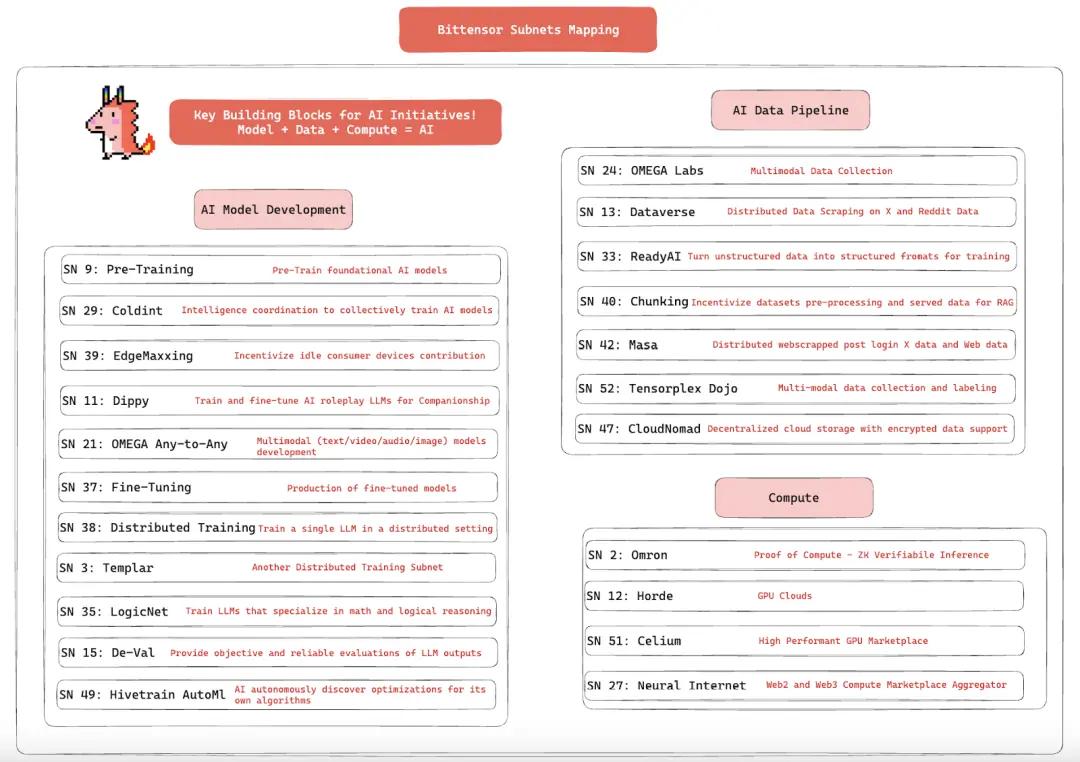
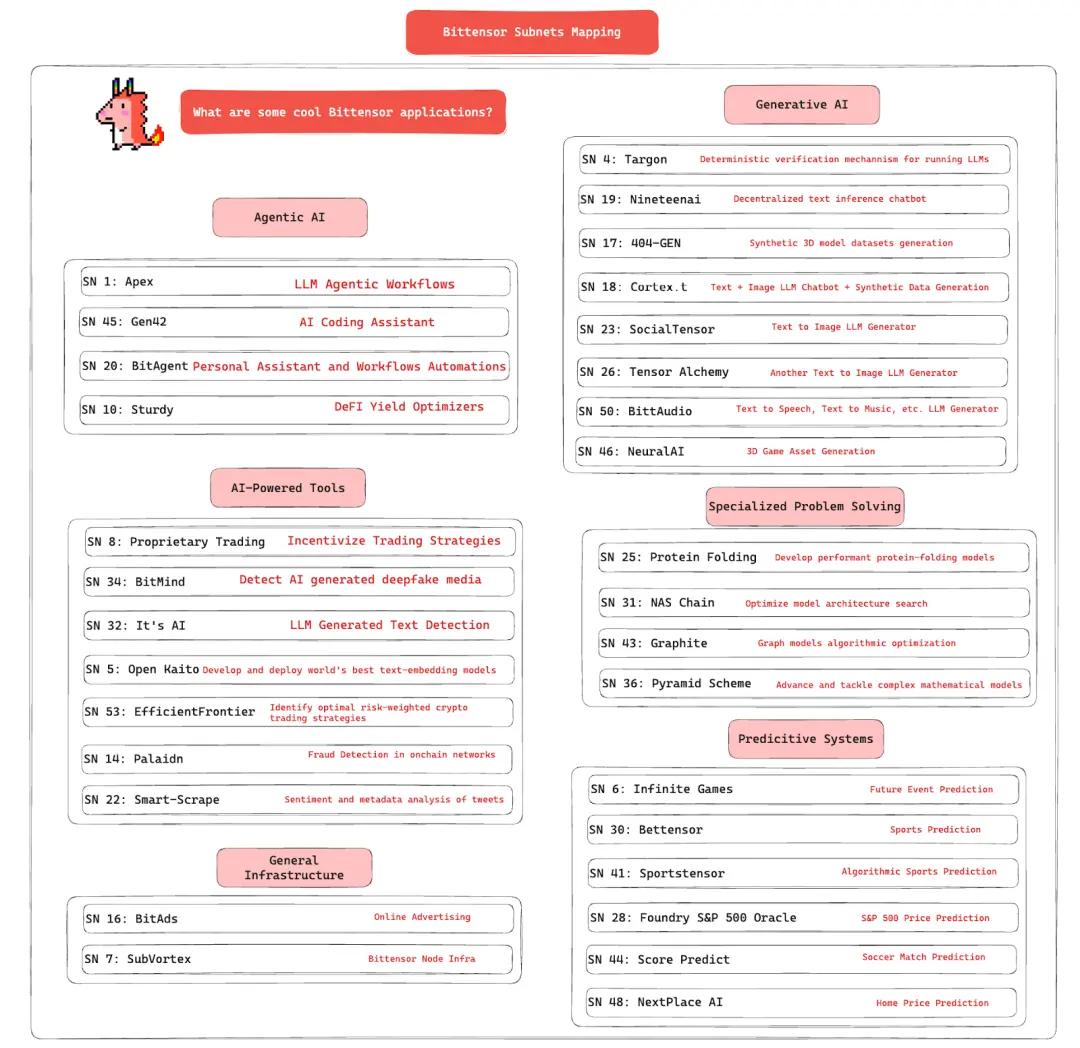
Source: IOSG Ventures
The Role of the Subtensor Blockchain
Clearly, the blockchain and the project token TAO play a significant role in this series of competitions.
First, the Subtensor blockchain records all the key activities of the subnets in its ledger. More importantly, the Subtensor blockchain is responsible for determining the reward distribution for subnet miners and subnet validators. An algorithm called Yuma Consensus (YC) runs continuously on the Subtensor blockchain. Each subnet validator ranks the work quality of all subnet miners, and all of their rankings are then submitted as collective input to the YC algorithm. Generally, the rankings from different subnet validators arrive at different times on Subtensor, but the YC algorithm on Subtensor will wait for all the rankings to arrive and, typically every 12 seconds, calculate the rewards based on all the validator inputs. These rewards (denominated in TAO) are then deposited into the wallets of the subnet miners and subnet validators. The Subtensor blockchain runs the YC algorithm independently and continuously for each subnet.
The YC consensus algorithm mainly considers two factors. The first is a weight vector maintained by each subnet validator, where each element of the vector represents the weight assigned to the subnet miners, which is based on the historical performance of the subnet miners according to that subnet validator. The second factor is the staking amount of each validator and miner. The on-chain Yuma consensus will use this weight vector and staking amount to calculate the rewards and distribute them among the subnet validators and subnet miners.
The Bittensor API will serve to transmit and connect the opinions of the subnet validators and the Yuma consensus on the Subtensor blockchain. Additionally, validators within the same subnet will only connect to miners within the same subnet, and validators and miners from different subnets will not communicate or connect with each other.
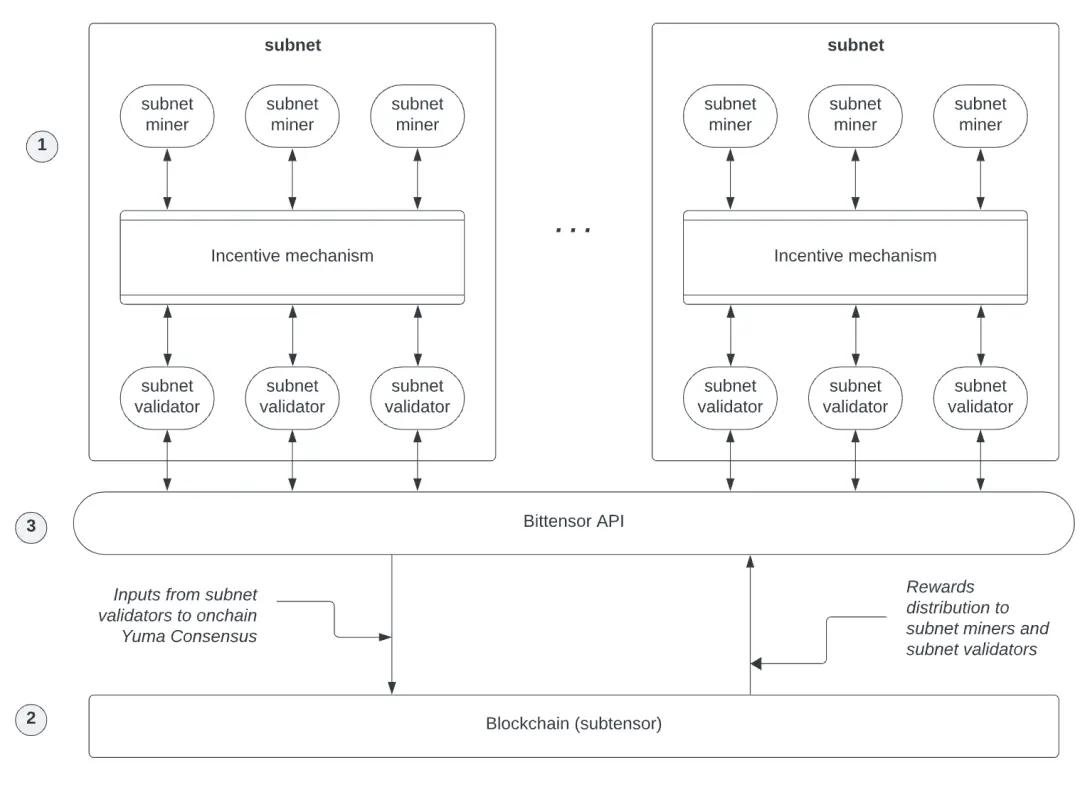
Source: Bittenso
Validator Game Theory
To participate as a subnet validator or subnet miner, one must first register and stake. Registration means registering a key in the desired subnet and obtaining a UID slot in that subnet, which represents the right to validate that subnet. Note that a subnet validator can hold multiple UID slots and validate for multiple subnets, but the staking amount does not need to be increased. Staking once in the TAO amount is sufficient to choose multiple UID slots and validate for multiple subnets (similar to the concept of reStaking).
Therefore, to obtain the maximum reward, staking validators will tend to choose to provide validation services for all subnets. However, not all staked validators have the right to actually provide staking services. Only the top 64 validators by staking amount in a subnet are considered to have the true validation permission for that subnet. This reduces the risk of validator misbehavior, as the staking amount becomes a high threshold and increases the cost of misbehavior (one must have at least 1,000 TAO to set weights in a subnet). Each validator will try to build a good reputation and performance record to attract more TAO delegated staking to increase their staking amount and become one of the top 64 validators in that subnet.
Once the subnet validators and subnet miners (running miners do not require staking) have registered their keys to the subnet, they can start mining.
Unique Token Incentive Economics
All TAO token rewards are newly minted, similar to Bitcoin. Bittensor's $TAO has the same token economics and issuance curve as Bitcoin. TAO supply: a total cap of 21 million, halving every 4 years.
Bittensor started with a fair launch, with no pre-mined TAO tokens or ICO. Currently, the network generates 7,200 TAO per day, with 1 TAO per block, and a block produced approximately every 12 seconds. The total supply cap is set at 21 million, following a programmatic issuance plan similar to Bitcoin.
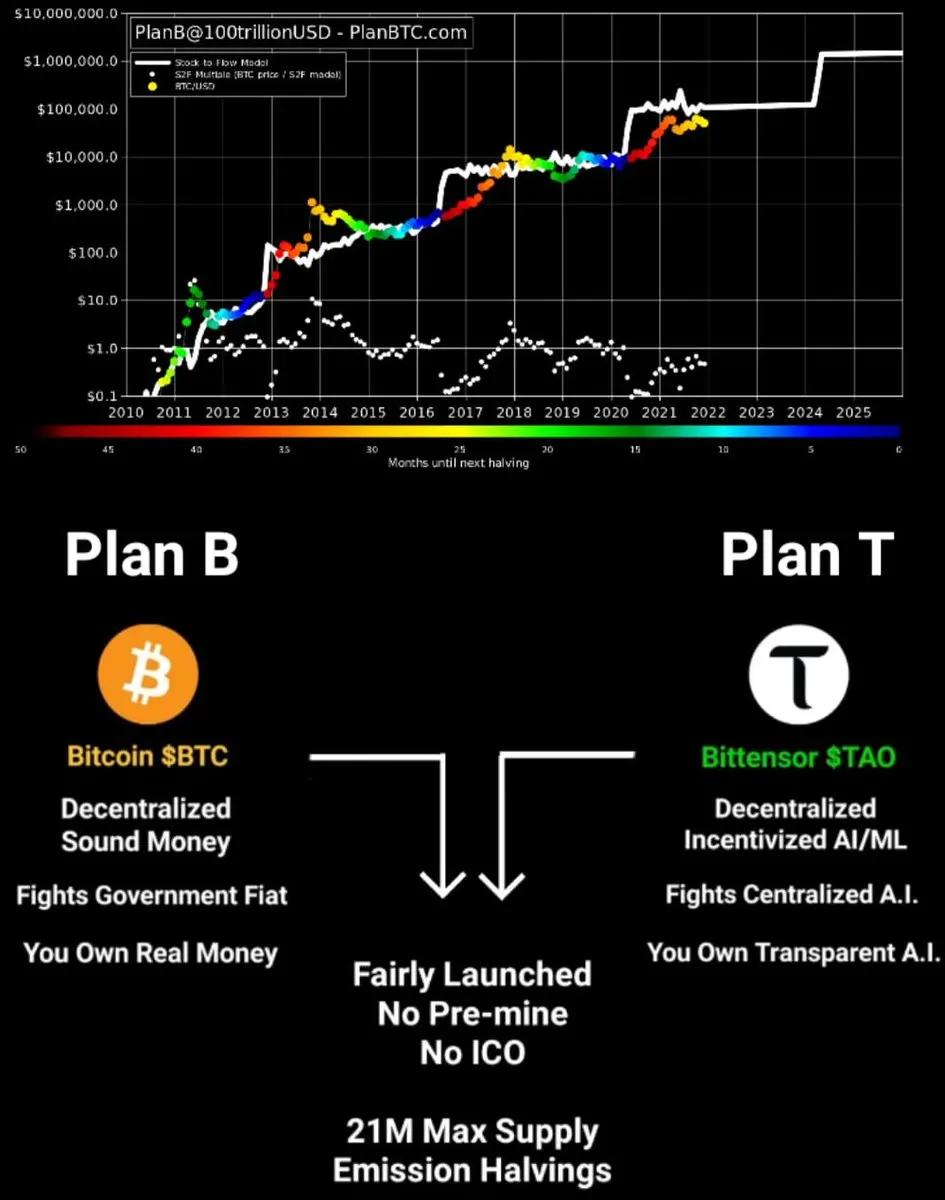
However, Bittensor has introduced a unique mechanism where the issuance rate will be halved once half of the total supply has been distributed. This halving occurs approximately every 4 years and continues at each subsequent half-point of the remaining tokens until the full 21 million TAO tokens are in circulation.
Although TAO adopts Bitcoin's issuance curve and principles, its buyback mechanism makes this curve actively dynamic, unlike Bitcoin's completely fixed curve.
Buyback Mechanism:
The current cycle's daily token issuance is 7,200 TAO (the same as Bitcoin's first cycle from January 2009 to November 2012).
However, a certain amount of dynamic TAO is being bought back through key (re)registration every day.
To become a miner or validator, one must register a key in the network and meet other GPU and computing power requirements. This registration requires buying back TAO, i.e., paying a certain amount of TAO to be reinvested in the network.
Each key (re)registration removes that TAO from the circulating supply and puts it back into the protocol's issuance pool, to be mined again in the future.
This mechanism delays the planned 4-year halving timeline, as the buyback TAO is dynamic. The buyback TAO may increase significantly when more keys are (re)registered, the TAO buyback cost increases, or other subnets are launched.
Furthermore, registration applies not only to new entrants but also to those who have been deregistered due to the following reasons:
For miners, their models and reasoning are not competitive enough among other miners;
For validators, they failed to consistently set the right weights, maintain issuance, or have enough TAO (self-delegation + other delegators' shares) in their keys.
These factors themselves will also exacerbate the growth in registration demand.
Buyback TAO amount = (Total key (re)registrations across all subnets) * (Average (re)registration cost)
Therefore, the first planned halving 4 years after launch may be delayed to 5 or 6 years, or even longer. This depends entirely on the balance between TAO issuance and buyback.
The Bittensor network launched in January 2021, and based on token buyback data from taostats, the planned halving date is expected to be delayed to November 2025.
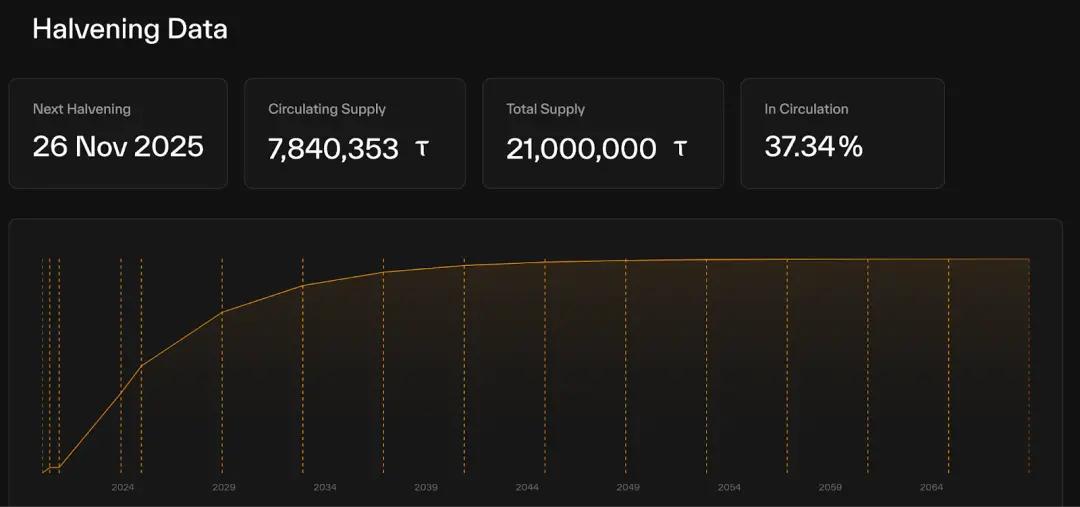
Source: https://taostats.io/tokenomics
What is dTAO?
dTAO is an innovative incentive mechanism proposed by the Opentensor/Bittensor network, aimed at addressing the problem of low resource allocation efficiency in decentralized networks. Unlike the traditional method of manual voting by validators to determine resource allocation, dTAO introduces a market-based dynamic adjustment mechanism, directly linking resource allocation to subnet network performance, thereby optimizing the fairness and efficiency of reward distribution.
Core Mechanism
Market-based Dynamic Resource Allocation
The dynamic TAO allocation mechanism is based on the market performance of subnet tokens. Each subnet has its own independent token, and its relative price determines the allocation proportion of TAO issuance among the subnets. As market information changes, this allocation ratio will dynamically adjust to ensure resources flow to efficient and promising subnets.Embedded Liquidity Pool Design
Each subnet is configured with a liquidity pool composed of TAO and subnet tokens (subnet/TAO token pair). Users can stake TAO in the liquidity pool to obtain subnet tokens. This design incentivizes users to invest in subnets with superior performance, indirectly supporting the overall development of the network.Fair Token Distribution Mechanism
Subnet tokens are gradually distributed through a "fair launch" model, ensuring that the team needs to gradually acquire token shares through long-term contributions and construction. This mechanism avoids the risk of tokens being quickly dumped, while also encouraging the team to focus on technical improvements and ecosystem building.Balanced Roles of Users and Validators
The dynamic TAO resource allocation is determined not only by the market, but also by the joint influence of validators and users. Validators need to evaluate the technical capabilities, market potential, and actual performance of teams like venture capitalists (VCs). Users, through staking TAO and participating in market trading, further drive the formation of subnet market value.
Economic Model Analysis
Current Funding Support
Data shows that the subnets in the current network can receive an average of about $47,000 in rewards per day, corresponding to an annual support of about $17 million. This funding scale is far higher than the median values of traditional AI startup seed rounds (about $3 million) and Series A rounds (about $14 million), providing strong support for the rapid development of subnets.Future Potential
Bittensor's current annual budget is estimated to reach $1.3 billion, comparable to centralized AI research institutions like OpenAI and Anthropic. With the introduction of dynamic TAO, future TAO issuance will mainly flow into the subnet token liquidity pools, further driving the circulation of capital and value within the ecosystem.
Long-term Incentives
The design of dTAO greatly incentivizes the team to continuously improve its technology and applications by linking the issuance volume to market performance. This mechanism also suppresses short-term behavior of quickly cashing out through over-the-counter (OTC) transactions, laying the foundation for the long-term sustainable development of the network.
Impact and Significance
Optimized Resource Allocation
dTAO dynamically adjusts resource allocation through market dynamics, ensuring that subnets with high utility and high growth potential receive more resources. This mechanism not only improves the overall efficiency of the network, but also drives competition and innovation.
Building a Decentralized AI Ecosystem
Bittensor is not only a decentralized AI network, but also becomes an incubation platform for AI networks through dynamic TAO. The competition and collaboration between subnets further promotes the development of the decentralized AI ecosystem.
Incentives for Ecosystem Participants
Dynamic TAO balances the interests of users, validators, and the team, ensuring that all participants can contribute to the growth of the network through economic incentive mechanisms.
Enhancing the Role of Validators
Validators need to play a more important role in the network. They strictly evaluate the value and potential of subnets through a venture capital-like approach, ensuring the scientific and reasonable allocation of network resources.
The launch of dTAO marks a major breakthrough in the decentralized network resource allocation mechanism. Through market-based dynamic adjustments, embedded liquidity pool design, and fair issuance models, dTAO achieves efficient and fair resource allocation. Furthermore, as an AI network incubation platform, it not only empowers the development of subnets, but also provides a new development path for the future of decentralized AI networks.
Applications of Agents on Bittensor
Many people say that Bittensor is the AI coin representing the VC elite, and it has fallen behind the flourishing application era in the current ecosystem of various agent developer frameworks. With the recent rise of the AI Agents craze and the total market capitalization of AI Agent-related tokens exceeding $10 billion, especially the Virtuals ecosystem, which accounts for $5 billion in market value (including various utility-based investment and research analysis Agents such as $AIXBT, $VADER, $SEKOIA, etc.), Bittensor seems to be left behind in the eyes of many.
However, Bittensor still has many "Alphas". Many people are unaware that the success of Virtuals/ai16z in the consumer AI Agent field is complementary to the efforts of Bittensor subnets in decentralized AI infrastructure.
As the TVL (Total Value Locked) and influence of Agents expand, a robust training and inference infrastructure becomes increasingly important.
Currently, Virtuals and Bittensor are collaborating extensively in the ecosystem.
Many consumer-facing Virtuals protocol agents are supported by Bittensor subnets, leveraging the computing power and data ecosystem of TAO to create new possibilities, such as:
- TAOCAT, an AI agent in the Virtuals ecosystem created by Masa, serves as a staunch defender of TAO, actively participating in discussions on X and voicing the influence of TAO.
- TAOCAT utilizes the real-time data infrastructure of subnet 42 Masa and the advanced LLM provided by Bittensor subnet 19, competing for TAO token allocation in the Agent Arena of Bittensor subnet 59, creating a new paradigm of tokenized AI value capture, where any user interaction on X will become training data for TAOCAT.
Other projects supported by Bittensor subnets include:
- $AION: the first agent capable of predicting outcomes and participating in prediction markets, with copy-trading functionality soon to be launched.
- $SERAPH: the first project focused on verifying infrastructure, aiming to certify the upcoming wave of AI Agents that will sweep our digital world.
The collaboration between Virtuals and Bittensor proves that tremendous practical value can be created on top of the Bittensor infrastructure. With the official launch of AgenTAO (SN62), this will become an important milestone for automated software engineering Agents on Bittensor, and all Bittensor subnets will gradually be developed by Agents on Bittensor. In the future, we will see more AI Agents from the Bittensor ecosystem emerge in the application layer!
Conclusion
The future of Bittensor is exciting, with many research and investment institutions specifically focused on the Bittensor ecosystem starting to emerge, similar to the Ethereum network. This includes the appearance of the DCG founder's shill, podcasts, blogs, and OSS Capital, a research organization dedicated to Bittensor investment and a subnet, as well as a Bittensor networking group similar to the PayPal Mafia. Crypto and AI experts are also starting to gravitate towards and support Bittensor. Therefore, the recent surge of Bittensor's mindshare over Virtuals on Kaito is not without reason.
In April 2025, Bittensor will host a 300+ person The Endgame Summit and hackathon in Austin, Texas, specifically focused on onboarding more subnets, validators, and miners into the Bittensor ecosystem and expanding its reach.
Ultimately, the standard will be the products, and Bittensor's ecosystem is already thriving and flourishing. The Bittensor founder recently summarized the key achievements of the various Bittensor subnets over the past year on his personal X account.
Therefore, let's continue to have high expectations for Bittensor and see what products and use cases will emerge from it, becoming the go-to destination for people to find solutions to specific AI problems!




